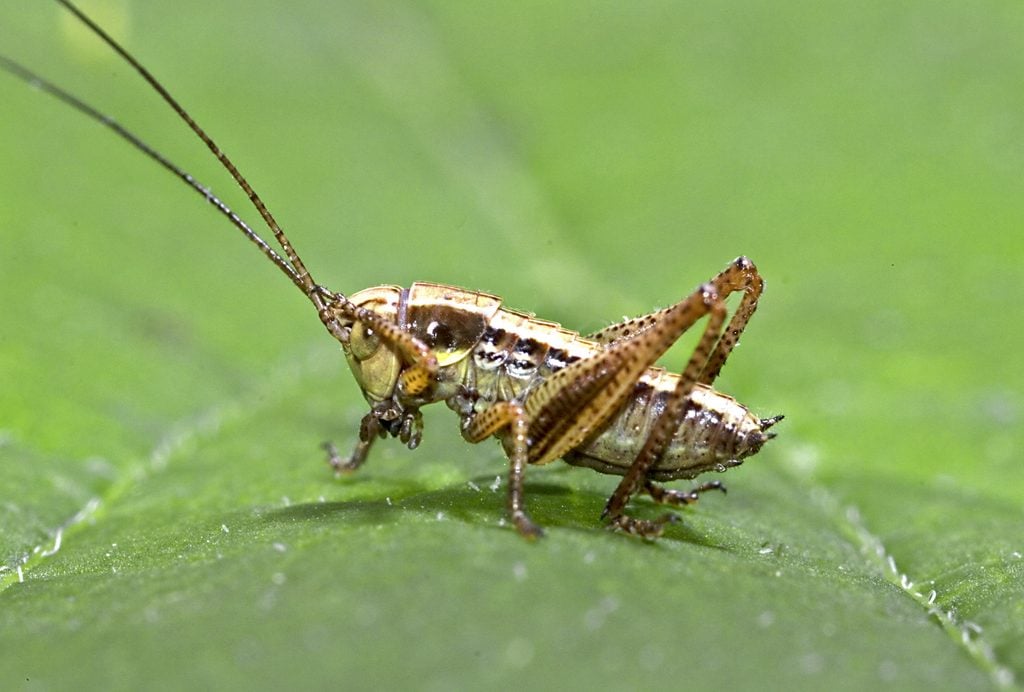Why Cicadas, Crickets, and Other Bugs Are So Loud
Updated: Apr. 27, 2021

How is it possible that bugs, itty-bitty little bugs, make such loud noises?
If you’re lying awake on a summer night and a noise from outside is keeping you up, chances are the creature responsible is not some bigger animal like a mammal or a bird, but a tiny bug! (Or several.) Insects like crickets and cicadas make some seriously loud noises, especially when you consider their size, and they seem to do it all. Night. Long. How do they make these noises, and why do they need to? If you’re seriously bothered by bug noises, try out these natural insect repellents that don’t require chemicals.
Katydids, crickets, and cicadas are the three types of bugs primarily responsible for those classic summery insect noises you hear at night. Whether you find them calming, irritating, or either one depending on the scenario, here’s the story behind the loud chirping noises bugs make.
Katydids
Rather predictably, many loud bug noises you hear have to do with mating. Whether the purpose of the sounds is to attract or ward off other insects, the bugs need to produce loud enough noises to be heard by any surrounding bugs in the area. Male katydids produce a mating call by rubbing their wings together, which is known as “stridulation.” It produces a buzzing or pulsing-type noise.
Crickets
Sure, the sound of crickets chirping is synonymous with an awkward or eerie quiet, but the sound itself is actually pretty loud! A big part of the reason bug noises sound so loud to our ears is because of the frequency they’re at. While the higher frequency of katydid noises produces a buzzing sound, the “low and pure” frequency of cricket noises registers as more of a “musical” chirp to human ears, according to Terminix. The noises crickets make also help attract potential mates, and only males make the noises. Like katydids, crickets rub their wings together to produce these sounds. And the sounds get complicated! “The front wings are modified not only to create sound, but amplify and broadcast it, too,” Insectlopedia reports. “A ‘calling song’ attracts females from a distance. A softer ‘courtship song’ woos her at close range; and a ‘rivalry song’ rebuffs competing males.”
Cicadas
As with the other bugs, only male cicadas produce the sounds. Also like crickets, the sounds aren’t just to attract mates but also to ward off other male bugs, or even send out distress calls, according to Terminix. A big aspect that differentiates cicadas from katydids and crickets is that cicadas don’t use stridulation; they use noise-making organs called tymbals located on their abdomens. Not only do cicadas produce the loudest noises of these three insects, they also have their eardrums located right near the tymbals. Luckily for them, though, they can fold their eardrums closed while producing the sounds, to protect their own hearing. The cicadas’ noises need to carry from tree to tree, according to Terminix, so they need to have a high volume! Of course, bugs do more than just make noise, especially in the warmer months, and here’s how to identify what bug bit you this summer.
